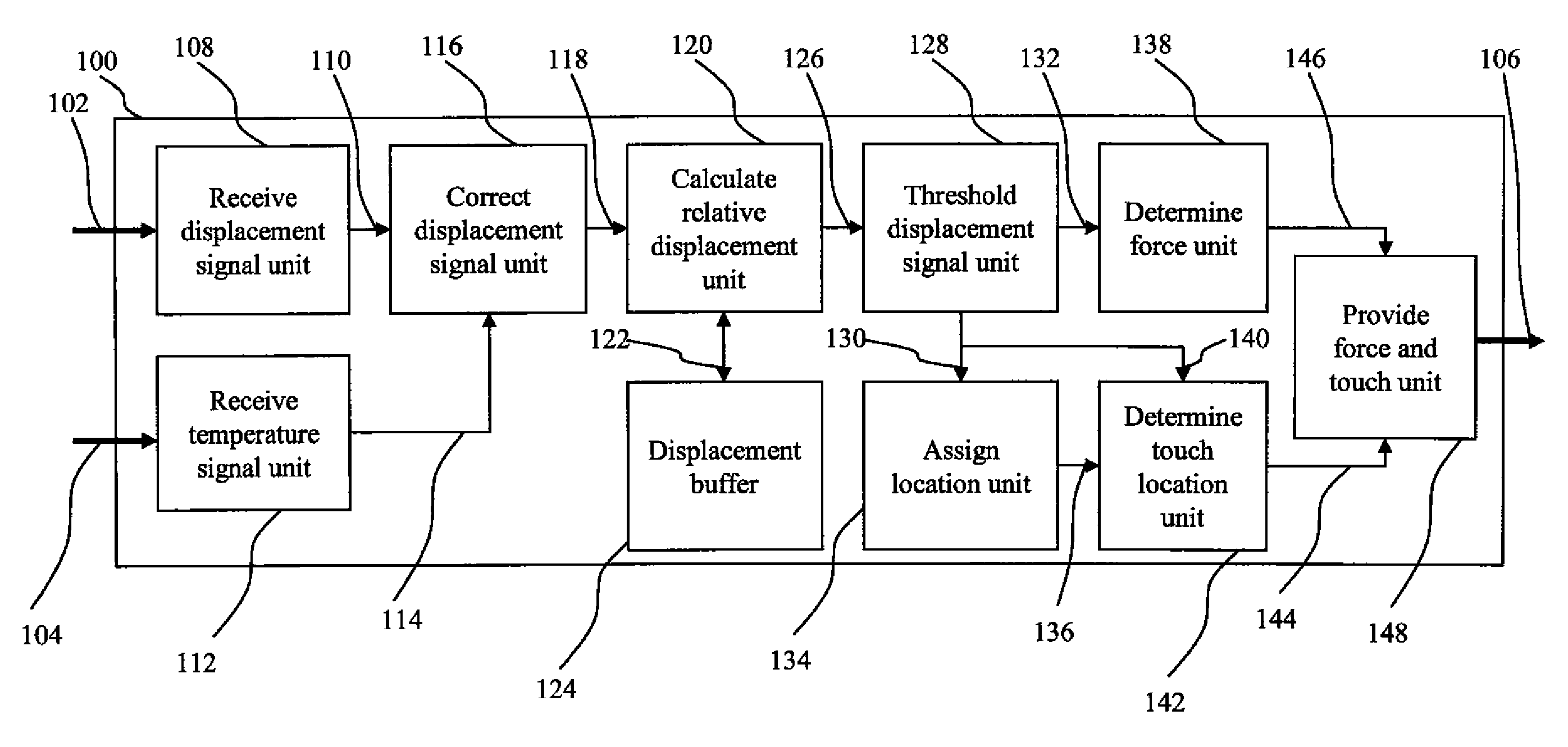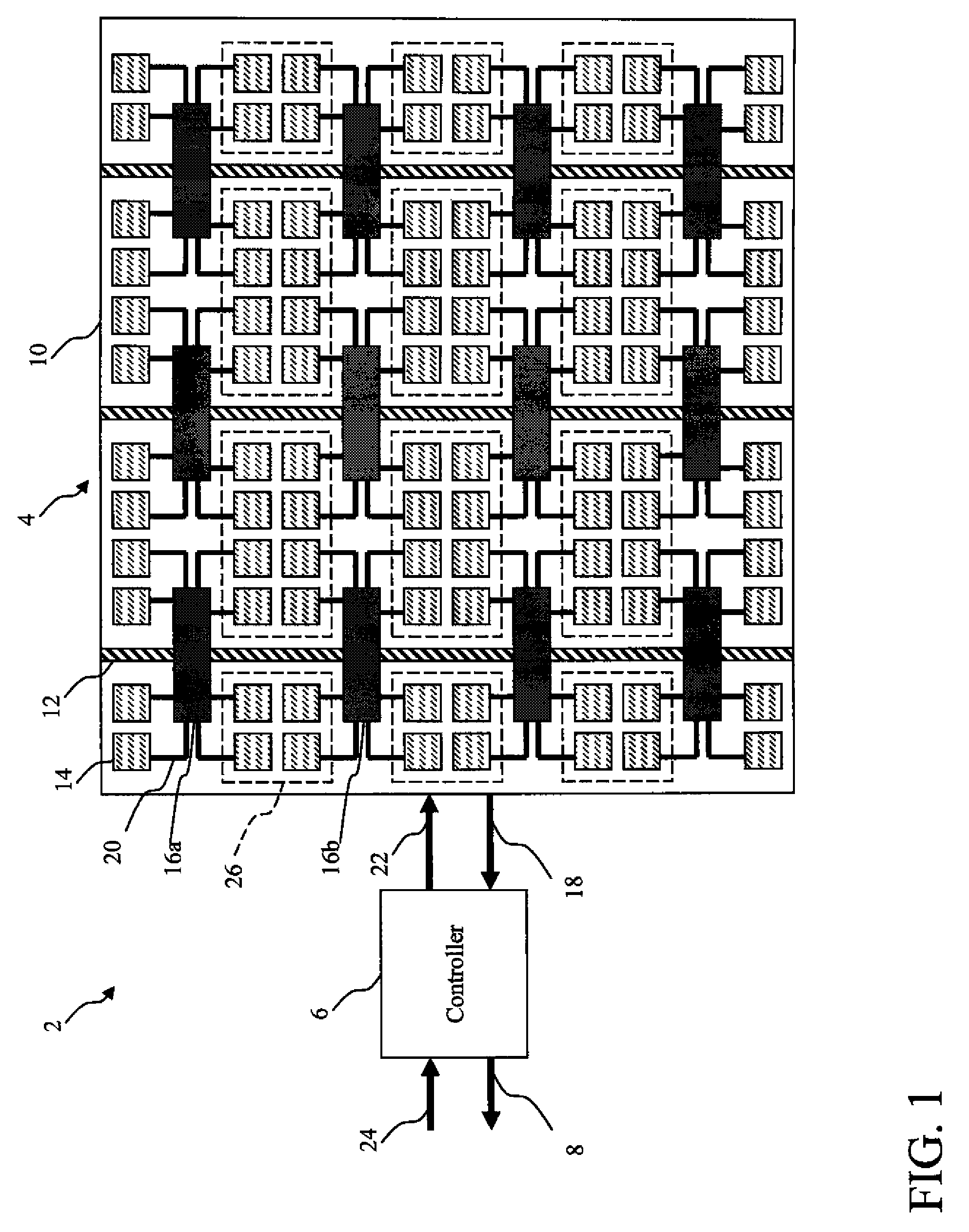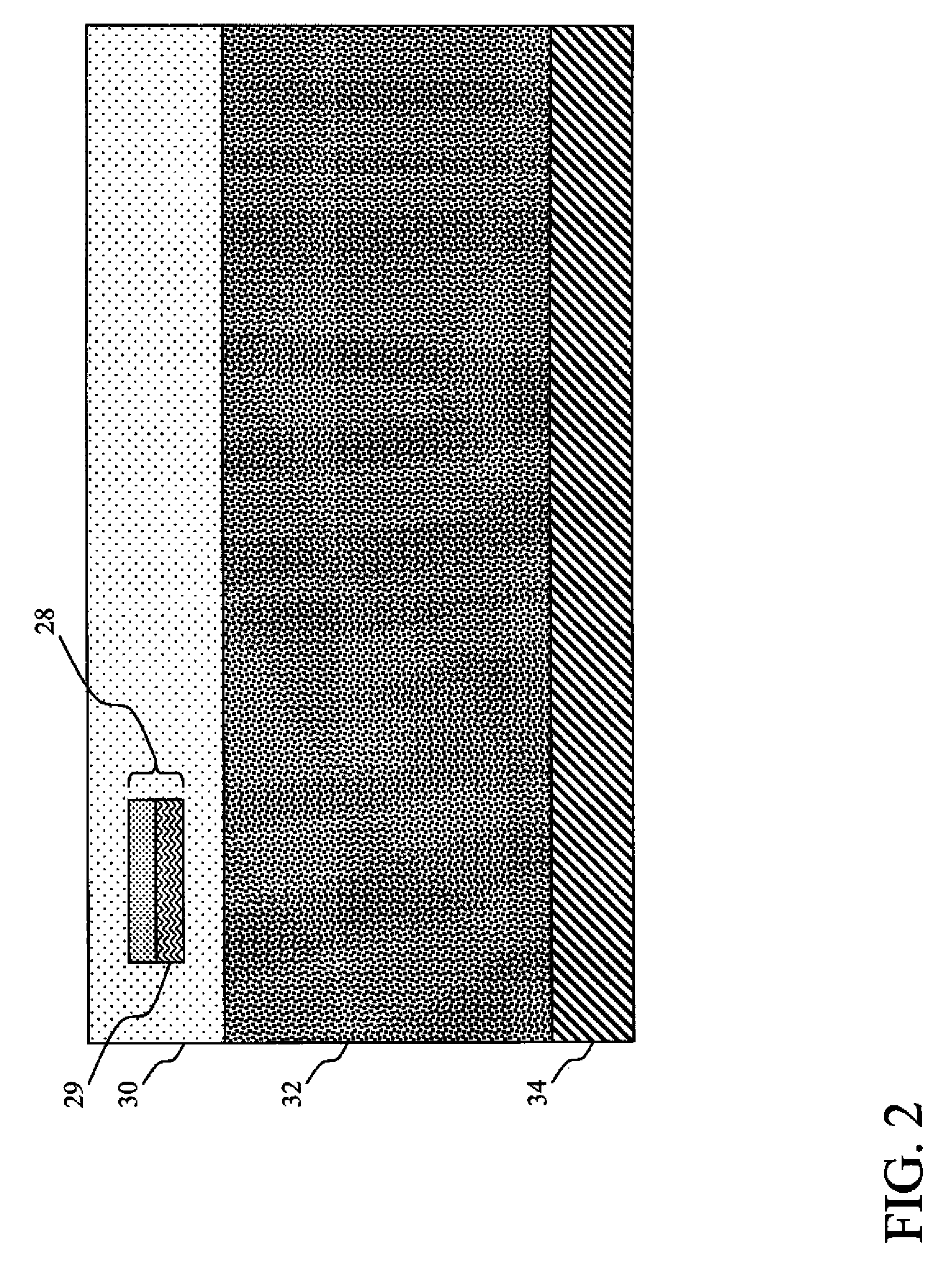Flexible multitouch electroluminescent display
a multi-touch, electroluminescent display technology, applied in electroluminescent light sources, static indicating devices, instruments, etc., can solve the problems of reducing the sensitivity, response time or selectivity of the touch screen, the touch screen is often not fully transparent, and the display with integrated touch screens can be relatively expensive, etc., to achieve low incremental cost, thin and flexible display, and high density
- Summary
- Abstract
- Description
- Claims
- Application Information
AI Technical Summary
Benefits of technology
Problems solved by technology
Method used
Image
Examples
Embodiment Construction
[0026]The present invention provides for an EL display on a flexible substrate with an integrated array of strain or stress sensors and a controller for displaying images on the display and receiving displacement signals to provide touch signals.
[0027]The present invention provides a display device 2 as shown in FIG. 1. This display device 2 is capable of producing touch signals 8 indicating the corresponding touch sensitive areas of the touch sensitive EL display 4 that have been touched. This flexible display device 2 includes a touch sensitive EL display 4 and a controller 6, wherein touch sensors are embedded within the EL display 4 such that touch overlays, corresponding electronics, or additional system components are not required. In some embodiments, this display is provided with a flexible support surface for constraining the deformation of the display 4.
[0028]Within the present invention, the flexible display device 2 includes a touch sensitive electro-luminescent (EL) dis...
PUM
 Login to View More
Login to View More Abstract
Description
Claims
Application Information
 Login to View More
Login to View More - R&D
- Intellectual Property
- Life Sciences
- Materials
- Tech Scout
- Unparalleled Data Quality
- Higher Quality Content
- 60% Fewer Hallucinations
Browse by: Latest US Patents, China's latest patents, Technical Efficacy Thesaurus, Application Domain, Technology Topic, Popular Technical Reports.
© 2025 PatSnap. All rights reserved.Legal|Privacy policy|Modern Slavery Act Transparency Statement|Sitemap|About US| Contact US: help@patsnap.com



